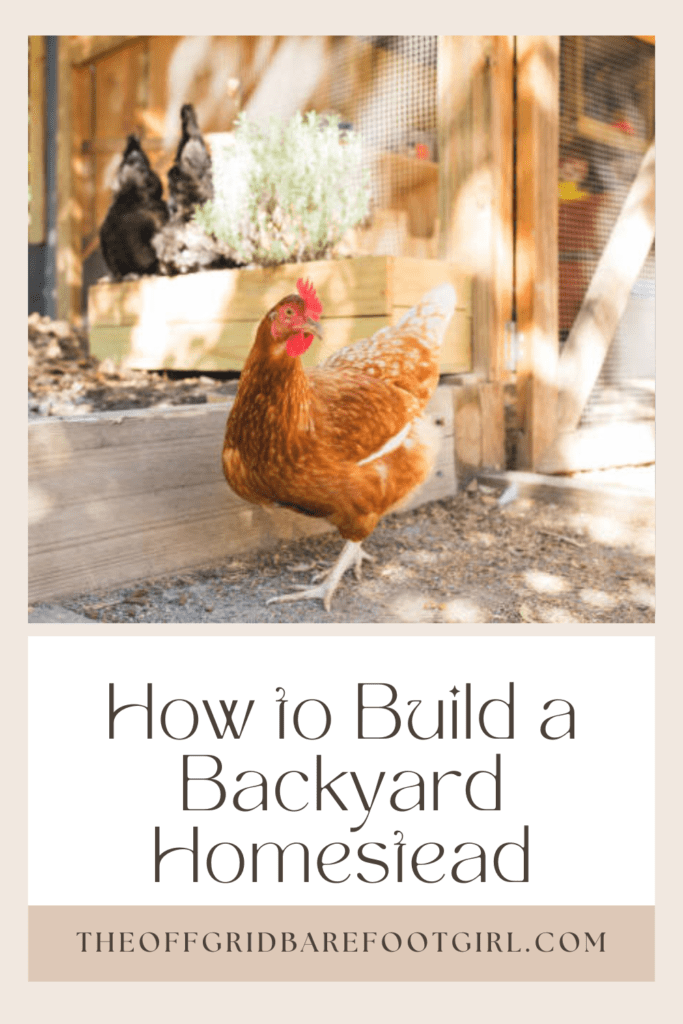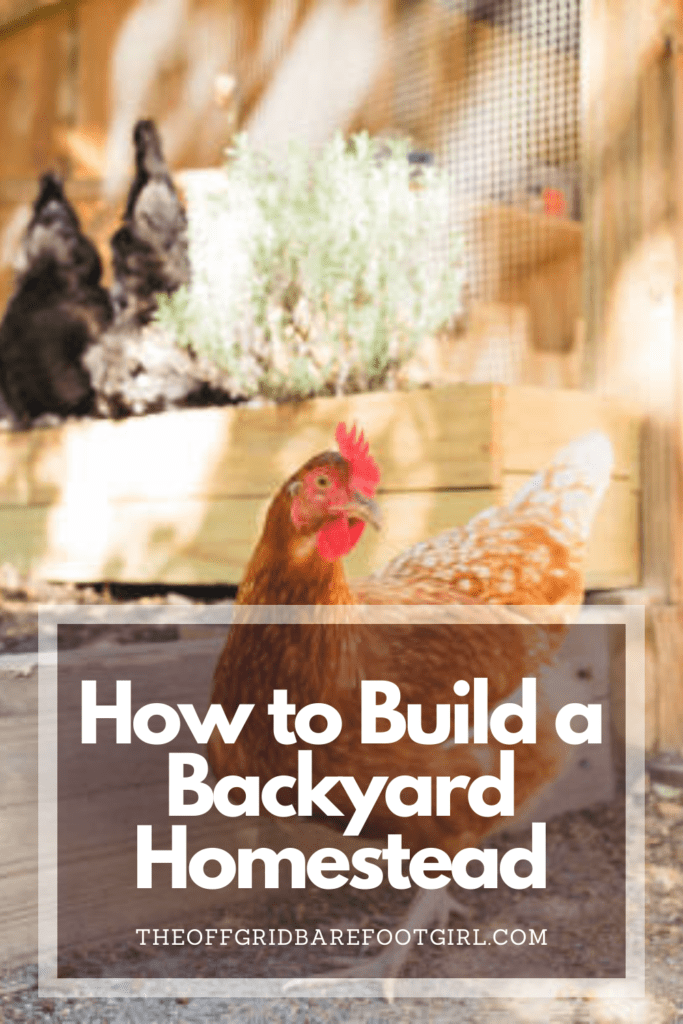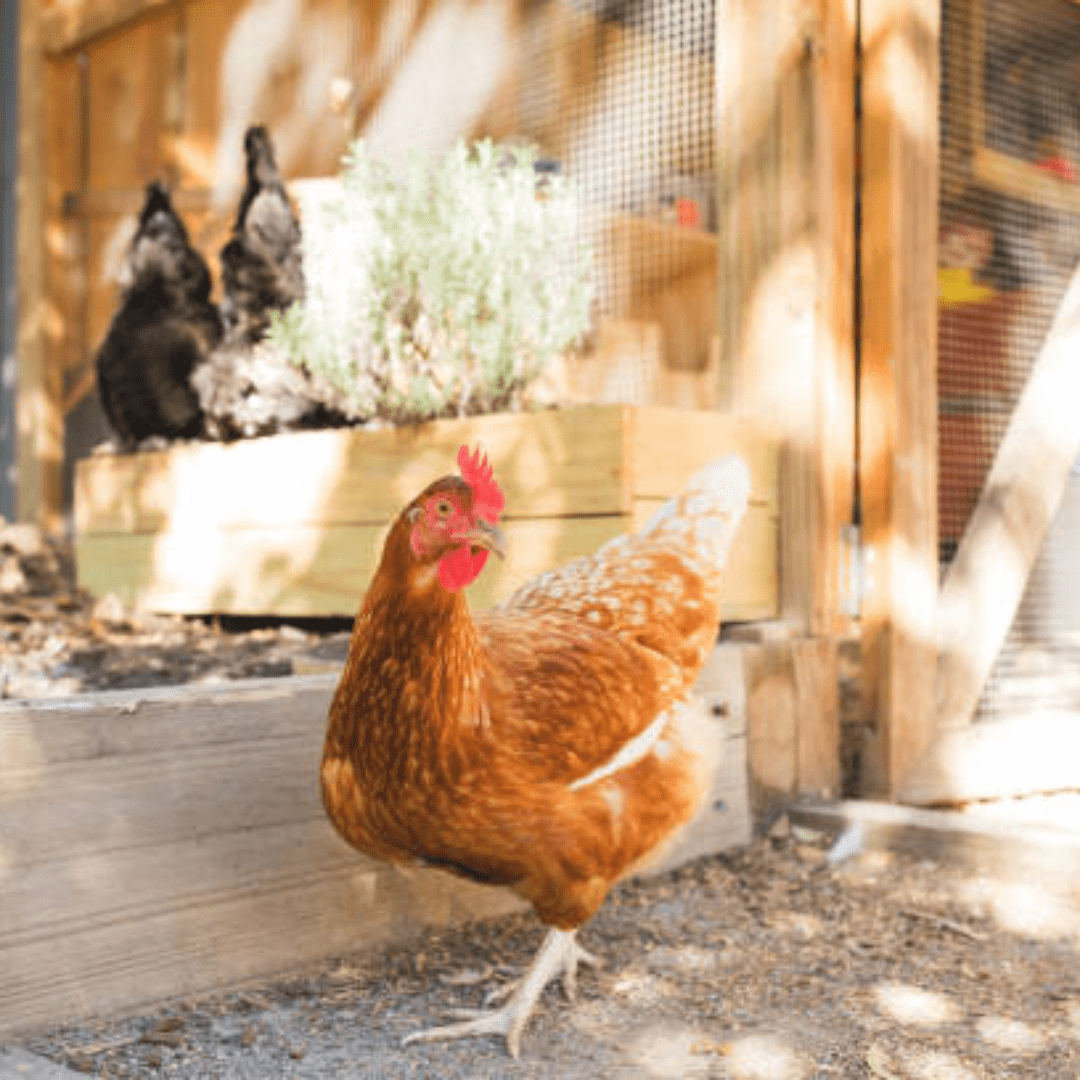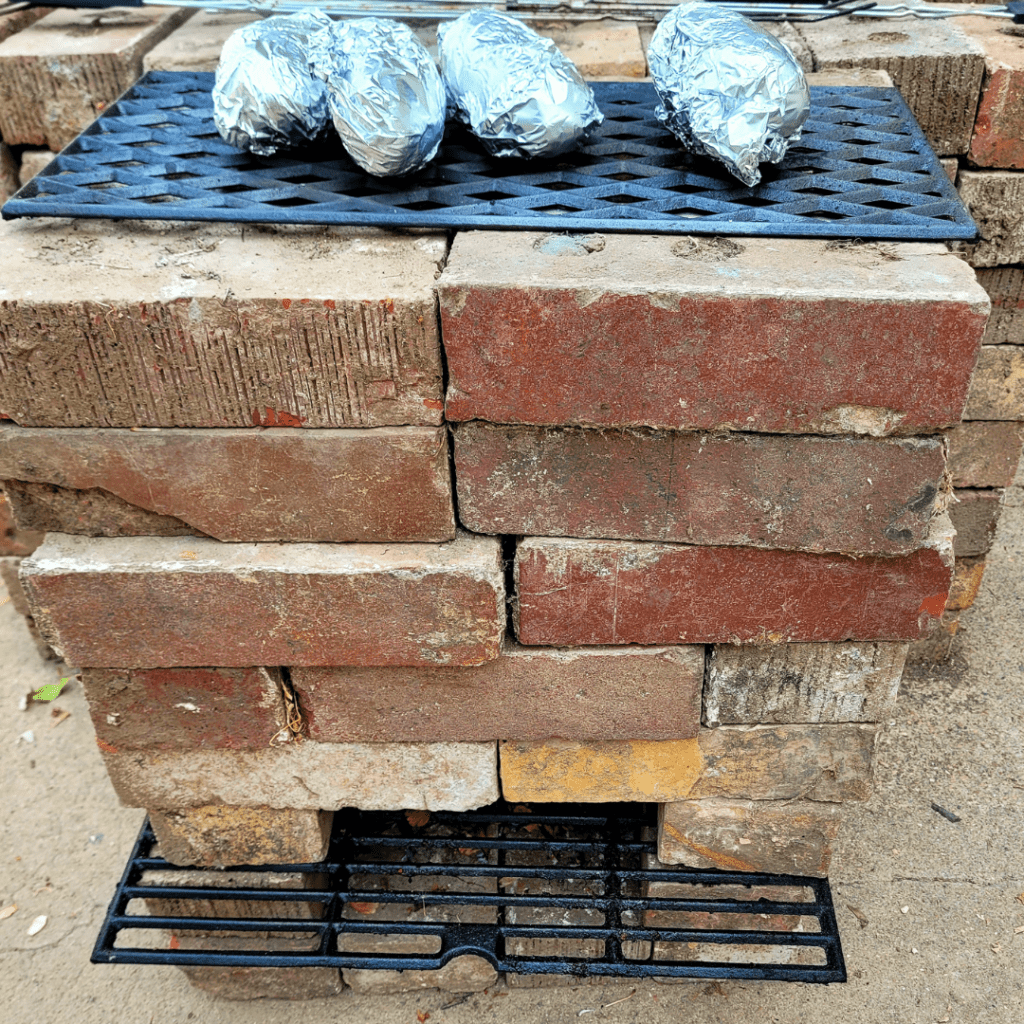Discover how to build a backyard homestead and transform your outdoor space into a self-sufficient haven. From growing your own fruits and vegetables to raising chickens, this step-by-step guide covers everything you need to start living sustainably at home. Learn practical tips, budget-friendly ideas, and simple strategies to create a thriving backyard homestead that nourishes your family and soul.
There’s something magical about turning a simple backyard into a place that provides food, comfort, and a sense of accomplishment. Building a backyard homestead doesn’t require acres of land or a hefty budget—it’s about taking small, intentional steps toward self-sufficiency. In this guide, I’ll walk you through the essentials: from planning your space and choosing what to grow, to adding backyard animals and creating a sustainable routine. Whether you dream of fresh eggs every morning, homegrown vegetables on your table, or a little patch of paradise to escape the hustle, your backyard can become a homestead you’re proud of!
This is a pinnable post. Tap or hover over any image in this post to pin to your Pinterest Boards.

Introduction to Backyard Homesteading
Understanding the Concept of Backyard Homesteading
Backyard homesteading, in a nutshell, is the art of turning your humble little backyard into a self-sufficient haven. It’s like creating your own mini-farm, without the need for acres of land or a questionable farmer’s tan. You can grow your own fruits and veggies, raise chickens for fresh eggs, and maybe even feel like a pioneer while you’re at it.
Benefits of Building a Backyard Homestead
So, why should you consider building a backyard homestead? Well, for starters, it’s a fantastic way to reconnect with nature and rediscover the joy of getting your hands dirty. Plus, you’ll have a constant supply of fresh, organic produce right at your doorstep. And let’s not forget the money you’ll save on groceries. Not to mention, your friends and neighbors will be seriously impressed when they see all the cool stuff you’re able to grow.
Designing and Planning Your Backyard Homestead

Assessing Your Space and Resources
Before you dive headfirst into backyard homesteading, take a good look at your space and resources. Consider the size of your backyard, the amount of sunlight it receives, and the availability of water sources. Oh, and don’t forget to consider your own time and energy levels too. Rome wasn’t built in a day, and neither will your homestead. Take it slow and make sure you can handle the workload.
Developing a Layout and Design Plan
Once you’ve assessed your space, it’s time to get creative and develop a layout and design plan. Think about where you want to put your garden beds, greenhouse, composting systems, and animal shelters. Take into account any zoning or legal requirements in your area. And don’t be afraid to let your imagination run wild (within reason, of course). This is your backyard homestead, after all.
Considering Zoning and Legal Requirements
Speaking of legal stuff, it’s important to consider any zoning and legal requirements in your area. Some neighborhoods have regulations on the number of animals you can have or the size of structures you can build. So, before you start constructing your dream chicken coop, make sure you’re on the right side of the law. Many small sheds can be turned into a nice chicken coop!
Building Essential Infrastructure and Structures

Constructing Garden Beds and Raised Planters
Now comes the fun part – constructing essential infrastructure. Start by building your garden beds and raised planters. This will give your plants a nice cozy home and help prevent your soil from turning into a muddy mess. Plus, it’ll save your poor back from excessive bending.
Building a Greenhouse or Cold Frame
If you want to be a true backyard homesteader, consider building a greenhouse or cold frame. These nifty structures will extend your growing season and protect your delicate plants from the harsh elements. Just think of it as a swanky protective shield for your leafy friends. Bonus points if you can use your greenhouse as a cool hangout spot for yourself, too.
Setting up Composting Systems
No backyard homestead is complete without a composting system. Not only will composting help reduce your carbon footprint, but it’ll also transform your kitchen scraps and yard waste into nutrient-rich soil.
I have written a few handy posts to help you get started in composting!
- Compost or Fertilizer: Dirty Secrets of Which Is Better?
- Clever Ways to Incorporate Indoor Composting into Your Home
- How to Start Composting for the Garden: A Step-by-Step Guide
- The Ultimate Guide to Composting in Your Suburban Backyard
Creating Animal Shelters and Fencing

If you’re feeling adventurous and want to take your homesteading game to the next level, consider raising some animals. But before you bring home the chickens or goats, make sure you have proper animal shelters and fencing in place. You don’t want your beloved animals wandering off or becoming prey to the neighborhood fox.
Let’s talk a bit about which types of animals are great for a backyard homestead.
Having chickens, goats, and bunnies on a homestead can be a great idea for various reasons, providing a range of benefits for both the land and the homesteaders. Here are some reasons why:
Chickens:
- Egg Production: Chickens are prolific layers, providing a consistent source of fresh eggs. This can contribute to a self-sufficient and cost-effective lifestyle.
- Pest Control: Chickens are natural foragers and can help control pests such as insects and small rodents. They can also scratch and turn over the soil, helping to manage weeds.
- Fertilizer Production: Chicken manure is a valuable source of organic fertilizer, enriching the soil with essential nutrients.
- Compost Aid: Chickens can be integrated into composting systems, turning kitchen scraps and yard waste into nutrient-rich compost.
- Low Maintenance: Chickens are relatively low-maintenance animals, making them suitable for beginners in homesteading.
Goats:
- Milk and Dairy Products: Goats are excellent milk producers, providing milk for drinking, and making cheese, yogurt, and other dairy products.
- Brush Clearing: Goats are natural browsers and can be employed to clear overgrown areas, helping with land management and reducing the risk of wildfires.
- Meat Production: Goats can be raised for meat, offering a sustainable source of protein for the homestead.
- Fiber Production: Certain breeds of goats, such as Angora and Cashmere, can be raised for their fiber, providing material for textiles and crafts.
- Companionship: Goats are known for their friendly and social nature, making them enjoyable companions on the homestead.
Bunnies (Rabbits):
- Meat Production: Rabbits are a highly efficient source of meat, with high protein content and low fat.
- Manure Production: Rabbit manure is rich in nutrients and can be used directly in the garden without the need for composting.
- Space Efficiency: Rabbits can be raised in relatively small spaces, making them suitable for homesteaders with limited land.
- Fur and Fiber: Certain breeds of rabbits, such as Angora, can be raised for their fur, providing material for crafting.
- Low Environmental Impact: Rabbits have a low environmental footprint compared to larger livestock, requiring less feed and space.
By combining chickens, goats, and bunnies on a homestead, you create a diversified and integrated system that can enhance self-sufficiency, provide a variety of products, and contribute to a more sustainable and resilient lifestyle.
Cultivating and Maintaining a Productive Garden

Choosing the Right Plants for Your Climate
Now that your backyard homestead is coming together, it’s time to get down to business and start cultivating a productive garden. But hold your horses, my green-thumbed friend. Before you start planting like there’s no tomorrow, make sure to choose plants that are suitable for your climate. You don’t want to bring home a delicate tropical plant if you do not live in the tropics and watch it shrivel up and die in the first frost. That would be a real bummer.
Preparing and Amending the Soil
Healthy plants need healthy soil, so it’s important to prepare and amend your soil before planting. Add organic matter like compost or well-rotted manure to improve the fertility and structure of the soil.
Here are some of my posts about improving your garden soil.
- How to Fix Sandy Garden Soil with These Effective Organic Amendments
- How to Use the Hand Twist Claw Tiller: Tackling Tough Soil
- 4 Easy DIY Garden Soil Tests to Do Now
- How to Install a Worm Tunnel and Improve Your Garden Soil
- Compost or Fertilizer: Dirty Secrets of Which Is Better?
Implementing Organic Pest and Weed Control
Pests and weeds are annoying, and here are ways to deal with them organically. You can use natural deterrents like companion planting, mulching, and homemade pest sprays. Plus, pulling weeds can double as an excellent stress-relieving workout. It’s a win-win, really.
Here are some of my posts about organic gardening that you may find helpful.
- How to Grow Marigolds As Pest Control In Your Vegetable Garden
- How to Effectively Combat Powdery Mildew in Your Garden
- The Best Tips for Organic Gardening
- How to Release Ladybugs In Your Garden for Organic Pest Control
- The Best Garden Snail Control Strategies
Survival Gardening for Your Backyard Homestead
Every backyard homestead can benefit from growing a survival or prepper garden. I have written many posts about how to grow an abundance of food for your backyard homestead.
- Why I Built A Survival Garden in My Backyard
- Fastest Growing Vegetables for Your Survival Garden
- How to Grow a Prepper Garden to Survive and Thrive
- How to Plan a Vegetable Garden: Expert Green Thumb Tips!
- How to Plant and Grow a Salsa Garden
- How to Grow a Productive Canning Garden
- The Best Spring Vegetables to Grow in Your Garden
- Must-Have Tools for a Successful Balcony Vegetable Garden (Homestead anywhere!)
- The Best Garden Tools You Need for a Productive Season
- How to Grow Carrots for a Bountiful Harvest
- How to Grow Garden Peas for a Bumper Crop
Proper Irrigation and Water Conservation Techniques
Last but not least, you need to think about proper irrigation and water conservation techniques. Be mindful of how much water your plants need and try to minimize water waste. Consider using drip irrigation systems or watering by hand if you’re feeling extra generous. And always remember to water with love and care, because plants have feelings too (sort of).
Cultivating Renewable Energy

Cultivating renewable energy for a backyard homestead involves harnessing natural resources like sunlight, wind, and organic matter to generate power. Here are some ways to integrate renewable energy into your backyard homestead:
1. Solar Power:
- Install solar panels on your roof or in a sunny area of your property.
- Consider portable solar panels for flexibility in positioning and storage.
- Use solar water heaters to provide hot water for household needs.
- Utilize solar-powered lights, chargers, and other small devices for everyday needs.
2. Wind Power:
- Install small wind turbines if your location has sufficient wind.
- Ensure proper zoning regulations and choose a turbine suitable for residential use.
3. Biomass and Bioenergy:
a. Composting: (Great book!)
- Use organic waste from your homestead to create compost for soil enrichment.
- Consider a composting system that produces biogas for cooking or heating.
- Use wood stoves or biomass heaters for space heating.
4. Micro-Hydro Power:
- If you have a stream or a water source with consistent flow, consider installing a small hydro turbine.
5. Energy-Efficient Practices:
a. Energy-Efficient Appliances:
- Choose energy-efficient appliances and lighting to reduce overall energy consumption.
b. Insulation and Passive Design:
- Ensure proper insulation in your home to reduce the need for heating and cooling.
- Implement passive design principles to optimize natural light and ventilation.
6. Rainwater Harvesting:
- Collect rainwater for irrigation, reducing the need for conventional water sources.
7. Windbreaks and Shade:
a. Windbreaks:
- Plant trees or install windbreaks to reduce energy consumption by minimizing wind exposure.
- Strategically place shade structures to cool your home and outdoor spaces during hot seasons.
8. Energy Monitoring and Management:
- Invest in smart energy management systems to monitor and optimize energy use.
- Consider energy storage solutions like batteries to store excess energy generated during peak times.
9. Permaculture Design:
- Use permaculture principles to design your homestead for maximum energy efficiency and sustainability.
10. Community Resources:
- Explore community solar programs that allow you to benefit from solar energy without installing panels on your property.
Before implementing any renewable energy system, conduct a thorough assessment of your homestead’s energy needs, the availability of resources (sunlight, wind, water), and local regulations. Consult with professionals if needed to ensure the safe and effective implementation of renewable energy solutions for your backyard homestead.
Now go forth, my fellow backyard homesteader, and create your own little slice of paradise. May your plants grow tall, your chickens lay plenty of eggs, and may your gardening skills amaze your friends and neighbors. You’ve got this!
Backyard Homesteading Resources
I have compiled some of my own resources I have written about homesteading and provided some of my favorite resources from great books you can find on Amazon to add to your library.
Here are some of my homesteading posts you may find helpful.
- The Benefits of Urban Homesteading: Revolutionize Your City Life
- Introducing Homesteading Act and Homestead Exemption: Everything You Need to Know Now
Here are some of my favorite homesteading books you may like too!
- 40 Projects for Building Your Backyard Homestead: By David Toht
- The Backyard Homestead: By Carleen Madigan
- The Family Garden Plan: Grow a Year’s Worth of Sustainable and Healthy Food: By Melissa K. Norris
- The Homesteading Handbook: The Essential Beginner’s Homestead Planning Guide for a Self-Sufficient Lifestyle: By Kelly Reed
Conclusion
In conclusion, building a backyard homestead is a wonderful way to reconnect with the land, promote sustainability, and foster self-sufficiency. By following the steps outlined in this article, you can create a thriving ecosystem right in your own backyard, providing fresh food, renewable energy, and a sense of fulfillment. Remember, the journey toward a backyard homestead may require patience, continuous learning, and adaptation, but the rewards are immeasurable. So take the first step today, and embark on this rewarding adventure of building your very own backyard homestead.
Resources: Here are some helpful resources for further information.
- Building a Backyard Homestead: 13 Ideas for Living Small & (Self) Sustainably – By Sustainable Jungle
- Backyard Homesteading for Beginners – By An Off-Grid Life
- A Beginner’s Guide on How to Start Today! Homesteading – By Reformstead

Frequently Asked Questions
1. Can I build a backyard homestead if I have limited space?
Absolutely! While having limited space may present some challenges, it is still entirely possible to create a backyard homestead. In fact, many urban and suburban dwellers have successfully taken advantage of even the tiniest plots of land to grow their own food and raise animals. The key is to optimize your space by utilizing vertical gardening techniques, such as trellises or hanging baskets, which allow you to grow more plants without taking up valuable ground space. With a bit of creativity and proper planning, you can cultivate a diverse range of vegetables, herbs, and fruits even in a small backyard. Chickens are also an excellent option for limited-space homesteading as they require minimal room and provide fresh eggs daily. So go ahead and embrace your green thumb – there’s no limit when it comes to transforming your backyard into a thriving homestead!
2. How much time and effort does it take to maintain a backyard homestead?
Maintaining a backyard homestead requires a significant amount of time and effort, but the rewards are well worth it. It’s like having a mini-farm right in your own yard! Depending on the size and complexity of your homestead, daily chores could range from feeding and watering animals to tending to garden beds. Additionally, you may need to spend time harvesting fruits and vegetables, preserving food through canning or freezing, and maintaining structures like chicken coops or bee hives. While it can certainly be a lot of work, many homesteaders find joy in becoming more self-sufficient and being able to provide for their families with fresh and organic produce. Plus, there’s nothing quite like enjoying a homegrown meal knowing that you played a role in every step from seed to plate!
3. Do I need any specific skills or experience to start a backyard homestead?
Starting a backyard homestead does not necessarily require any specific skills or experience, although certain knowledge and abilities can be beneficial. Basic gardening skills, such as understanding soil composition, planting techniques, and watering requirements, are valuable when growing fruits, vegetables, or herbs. Familiarity with livestock care, like proper housing, feeding, and basic medical care, should be considered if raising animals is part of the plan. However, it’s essential to remember that acquiring these skills can happen over time through research, online tutorials, books, or even attending local workshops or webinars on topics like permaculture or sustainable living. Practical qualities like patience, determination, and adaptability are equally important for anyone starting a backyard homestead, as they will likely encounter challenges along the way. Ultimately, enthusiasm and willingness to learn can overcome any lack of initial experience in embarking on this rewarding journey toward self-sufficiency.
4. Can I still have a backyard homestead if I live in an urban area?
Absolutely! Living in an urban area doesn’t have to mean you sacrifice your dream of having a backyard homestead. In fact, it can be quite achievable with some careful planning and creative solutions. While the available space might be smaller compared to rural areas, there are numerous ways to maximize efficiency. Utilize vertical gardening techniques like trellises or hanging baskets to grow vegetables and herbs without taking up too much ground space. If you have a balcony or rooftop, consider container gardening or even installing a green roof system. Additionally, raising small livestock such as chickens or rabbits is still very much possible in urban areas, provided you respect local regulations and ensure appropriate housing and care.
Summary
I hope I have inspired you to build a backyard homestead with these helpful tips and products. Here are some other links you may be interested in reading!
The Ultimate Camping Gear Checklist: Everything You Need for an Adventure
The Ultimate Spring Cleaning House Checklist: Deep Clean with Me!
How Supporting Farmer’s Markets Makes a Difference
Eco-Friendly Christmas: How to Have an Eco-Friendly Christmas
How to Winterize Your Home: Prepare for Jack Frost’s Wrath!
Proven Hacks to Make Your Christmas Tree Survive
What Thanksgiving Teaches Us About Survival
Homeless Survival Hacks to Overcome Adversity
Is Your Car Ready for Winter? The Ultimate Checklist for Your Winter Emergency Car Kit
What The Walking Dead Can Teach Us About Survival: The Walking Dead Survival Tactics
Get Lockdown Ready: Best Dollar Tree Survival Items
Understanding Water Purification Methods for Survival: Best Practices Explained
Thirsty for Survival: Expert Guide to Emergency Water Prep Tactics
The Benefits of Urban Homesteading: Revolutionize Your City Life
Practical Pantry Prepper: Essential Guide
How to Grocery Shop Once a Month
What Should Be in A 72-Hour Survival Kit?
Buy or Die: Prepper Items You Need Now
How to Learn 58 Self-Sufficient Skills Right Now
Road to Self-Sufficiency: How to Start Your Journey
If you were encouraged by this post, I invite you to check out my FREE Printables Page for fun free printables, planners, and charts.
ENTER MY FREE Printables Page HERE
Blessings,
The Off Grid Barefoot Girl





